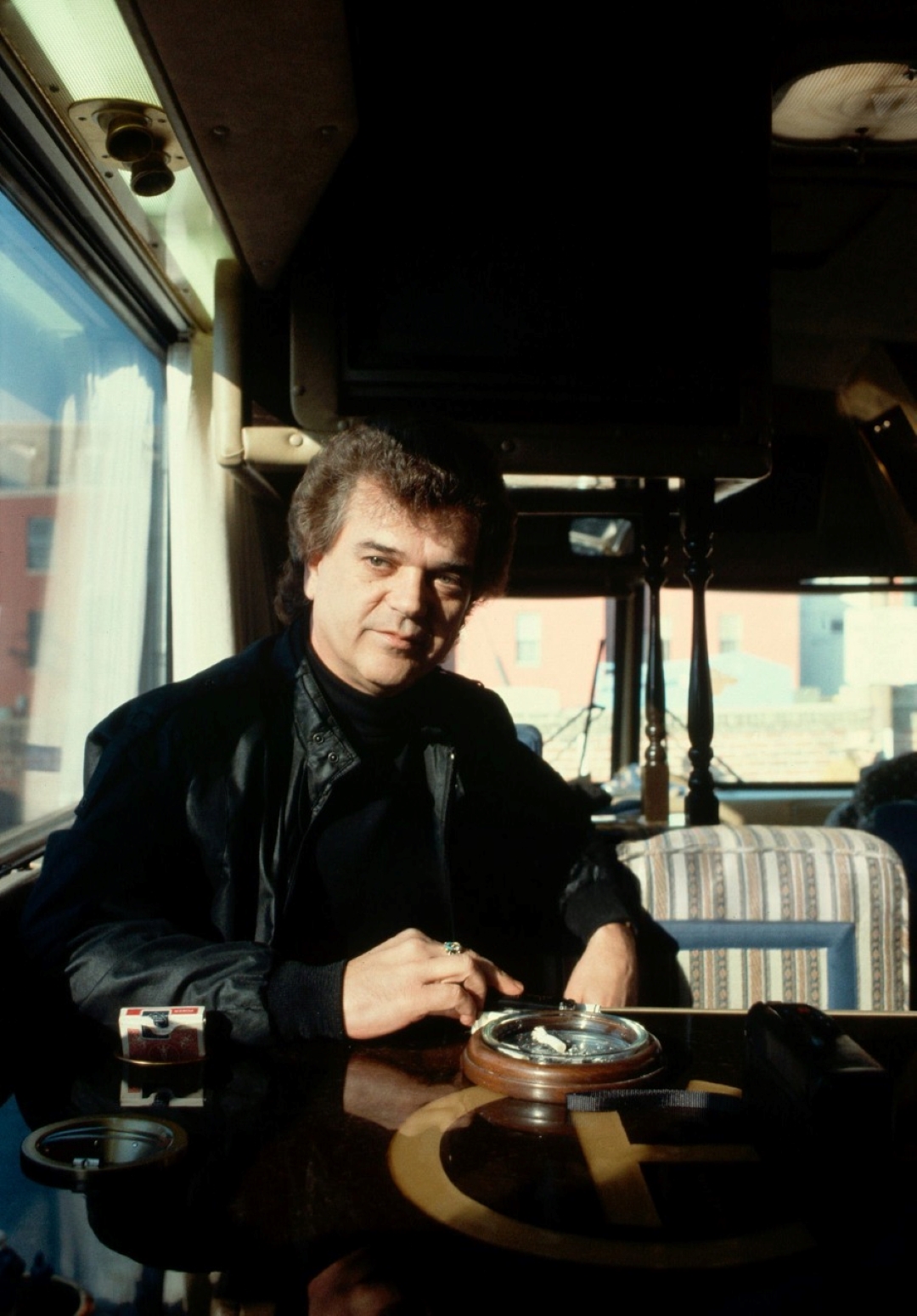🎸 From Rock ’n’ Roll Dreamer to Country Legend
In 1958, a young singer named Harold Lloyd Jenkins—who had rechristened himself Conway Twitty—burst onto the charts with “It’s Only Make Believe.” At the time, Conway was chasing a career in rock ’n’ roll, rubbing shoulders with Elvis Presley and Jerry Lee Lewis. The song became a global hit, topping the Billboard Hot 100 and selling millions of copies.
But while the world expected Conway to become another rock idol, his heart was elsewhere. By the late 1960s, the British Invasion had shifted the music scene. Rock belonged to the Beatles and the Rolling Stones. Conway, ever the pragmatist, saw where he truly belonged: country music. It wasn’t a retreat—it was a rebirth.
When he crossed into Nashville, skeptics doubted whether a rock ’n’ roller could win over traditional country audiences. But Conway had two things in his favor: an uncanny ability to interpret a lyric, and a voice that could melt the coldest heart. Within a few years, he was climbing the country charts, not as an outsider, but as a leader of a new generation.

🌹 The Arrival of “Hello Darlin’”
Every legend has a defining moment. For Conway Twitty, it came in 1970 with “Hello Darlin’.” The song, written by Conway himself, wasn’t flashy. It began with two simple words—spoken, not sung: “Hello darlin’.”
That opening line became iconic, one of the most recognizable phrases in country history. What followed was a heartfelt ballad of lost love, delivered with Conway’s rich baritone. Fans swooned. DJs played it endlessly. It climbed to No.1 on the Billboard Hot Country Singles chart, where it stayed for four weeks.
“Hello Darlin’” wasn’t just a hit—it became Conway’s signature song, his calling card for the rest of his career. At concerts, fans waited for the familiar opening. Presidents requested it. Astronauts even used it as a wake-up call aboard Apollo 17 in 1972.
It also cemented Conway as a balladeer. While others leaned on honky-tonk rowdiness, Conway specialized in love songs—sometimes tender, sometimes sensual, always unforgettable.
📀 Building a Mountain of No.1 Hits
What made Conway Twitty remarkable wasn’t just his talent but his consistency. After “Hello Darlin’,” the floodgates opened. One by one, songs like “I’d Love to Lay You Down,” “Tight Fittin’ Jeans,” “Don’t Take It Away,” and “Linda on My Mind” soared to No.1.
He didn’t rely on gimmicks. Conway had a formula: a strong melody, relatable lyrics, and an intimate delivery that made every listener feel like he was singing directly to them. His songs often dealt with love in all its forms—yearning, heartbreak, passion, reconciliation.
By the early 1980s, Conway had amassed a staggering 40 No.1 singles on the Billboard country chart, surpassing every artist before him. For perspective, that number exceeded legends like Merle Haggard, Loretta Lynn, and even Hank Williams. In the record books, Conway stood alone at the top.
🎶 The Duet Years with Loretta Lynn
Part of his success was his partnership with Loretta Lynn. Together, they recorded a string of duets that became classics, including “After the Fire Is Gone,” “Lead Me On,” and “Louisiana Woman, Mississippi Man.”
Their chemistry was electric—playful, believable, and deeply rooted in mutual respect. These duets added to Conway’s dominance, proving he could shine both as a solo balladeer and as one-half of the most beloved duo in country history.
But even without Loretta, Conway kept producing solo hits at a pace few could match. His name became synonymous with reliability. If you heard a new Conway Twitty single on the radio, chances were it would soon be No.1.
🎤 The Secret to His Longevity
Why was Conway able to dominate for so long? Part of the answer lies in his adaptability. While remaining true to traditional country, he wasn’t afraid to push boundaries. Some critics accused him of being too sensual, especially with songs like “You’ve Never Been This Far Before” and “I’d Love to Lay You Down.” But fans loved it.
He also had a tireless work ethic. Conway toured relentlessly, often playing more than 250 shows a year. He believed in connecting with fans directly, shaking hands, signing autographs, and making every person feel valued. This loyalty translated into decades of unwavering support.
🏆 The Record Before George Strait
By 1985, Conway Twitty had scored his 40th No.1 hit with “Desperado Love.” At the time, it was a number that seemed untouchable. Nobody in the genre’s history had achieved such dominance on the charts.
For nearly a decade, Conway’s record stood as the gold standard of success in country music. Artists like Willie Nelson, Johnny Cash, and Dolly Parton were iconic, but none had matched his sheer volume of chart-toppers.
Then came George Strait. Beginning in the 1980s, Strait quietly built his own empire of hits, eventually surpassing Conway in the 1990s and 2000s. Today, George Strait holds the crown with 60 No.1 singles.
But without Conway Twitty, there would have been no record to chase. Strait himself has acknowledged the foundation laid by Conway—a man who proved that a career could sustain not just one golden era, but several.
🌹 Legacy Beyond Numbers
When Conway Twitty died suddenly in 1993 at the age of 59, the country world mourned more than just a hitmaker. They lost a voice that had been part of their lives for decades.
While George Strait may have broken his record, Conway’s legacy is unique. He bridged genres, moving from rock to country with seamless grace. He gave fans a catalog of songs that still resonate today—ballads of love, duets of joy, and hits that filled dance halls and living rooms alike.
More importantly, he showed that country music could be intimate. His songs didn’t rely on grand narratives of cowboys or highways; they were about people, about love, about the quiet moments that define a life.
Numbers fade with time. Records are broken. But the feeling when you hear Conway softly whisper “Hello darlin’”—that endures.